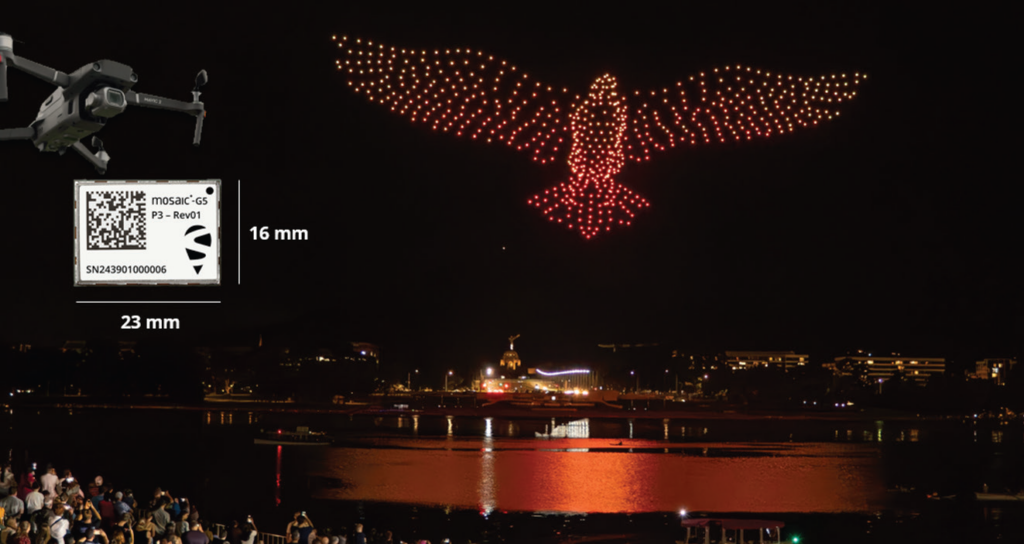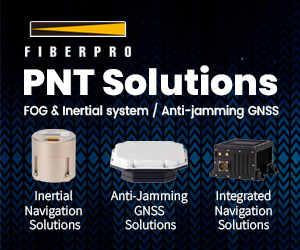GNSS module cuts size

(Image courtesy of Septentrio)
Septentrio has developed a series of high-accuracy positioning satellite navigation receivers that are the smallest available for their performance, writes Nick Flaherty.
The mosaic-g5 P1, mosaic-G5 P3 multi-frequency GNSS receivers and mosaic-G5 P3H GNSS heading receiver are based on a newly developed custom chip that integrates a CPU core and RF receiver logic for the first time. This means the module measures 16.4 x 22.8 x 2.4 mm and weighs just 2.2 g.
The modules all have the same pinout, with the mosaic-G5 P1 single-antenna variant and the P3H dual-antenna variant supporting three frequencies and the mosaic-G5 P3 single-antenna unit supporting four frequencies. These modules typically have power consumption of 440 mW.
All the modules support the US GPS, European Galileo, Russian GLONASS, Chinese BeiDou, Japanese QZSS and Indian NavIC systems as well as local RTK for higher precision.
“These smaller modules open up applications for UAVs such as light show systems, inspection UAVs, automated ground vehicles and robot lawnmowers,” said Gustavo Lopez, market portfolio manager at Septentrio, which is part of Hexagon.
Entry-level, high-performance positioning is offered by the triple-band mosaic-G5 P1 for high-volume applications such as inspection drones or robotic mowers. This has a 5 Hz data rate for basic resilience.
The quad-band mosaic-G5 P3 and the triple-band heading module mosaic-G5 P3H bring strong positioning reliability and availability in challenging environments, and are tailored for applications such as deliveries or light show drones. The mosaic-G5 P3 has a 20 Hz output and the raw data stream is also available at the same time, making it suitable for surveying or mapping with post-processing or sensor fusion procedures, for example.
“These can be used for more difficult environments, such as by walls or houses, and include new mechanisms for enhanced mitigation of ionospheric effects running on the embedded CPU,” said Lopez.
The mosaic-G5 P3H module can calculate a heading with a uniquely small distance between two GNSS antennas (known as the baseline), enabling use cases such as accurate navigation of small autonomous devices, where orientation is key, with a 20 Hz data feed and without the need to have access to the raw data.
All mosaic-G5 modules have low and predictable latency needed for stable and accurate control systems. “We have a good set of tools that connect via USB or serial interface to configure the receiver. These tools are cross platform and open source, so we have a very strong community ecosystem in GitHub with open-source projects to make sure it is as easy to use as possible,” said Lopez.
The modules complement the existing high-end mosaic-X5 module with a 100 Hz data rate that is used for defence and surveying applications because of its high performance and resilience to GNSS jamming and spoofing.
An evaluation board is available from Septentrio, together with samples of the new modules. Production is scheduled for later this year, and other evaluation boards are planned.
“We have been working with partners for evaluation boards for these modules for later in the year,” said Lopez.
UPCOMING EVENTS























